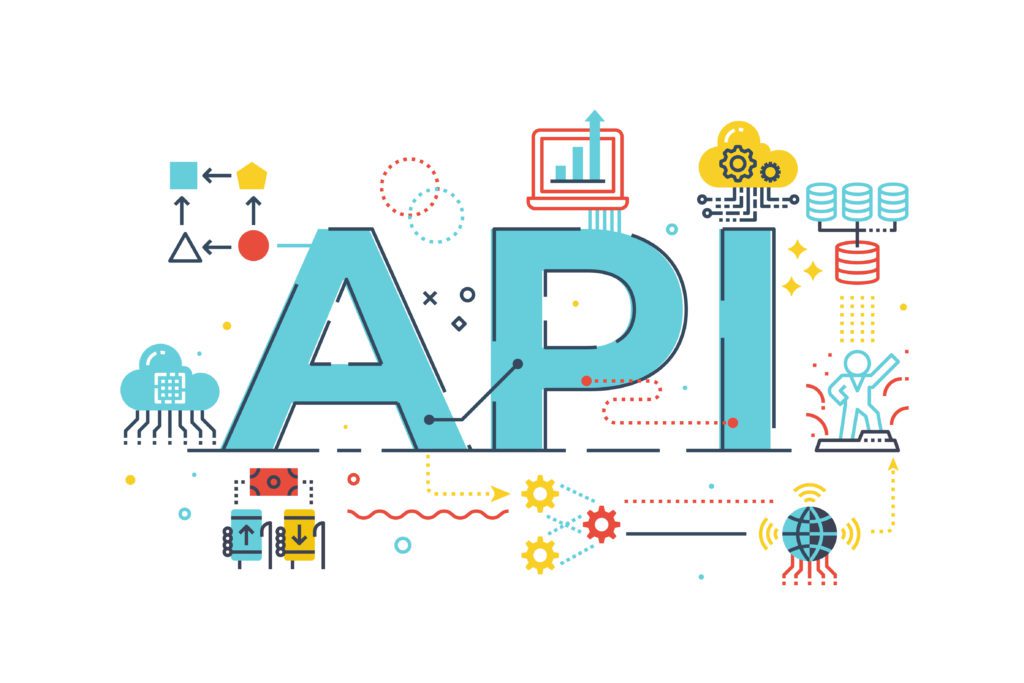
Whether you know it or not, almost every app you use is built on a variety of different application programming interfaces, or APIs, exposing their unique features to users and other developers through consistent platforms. An API is a great way to quickly exchange data between two or more applications or websites. So how do APIs work? Here’s a primer.
Read more: Top Cloud Computing Companies for 2022
What Is an API?
An application programming interface (API) is a set of routines, protocols, and tools for building software applications. An API defines how software components should interact. By defining how things should work together, APIs have a huge impact on productivity, as developers can leverage existing solutions instead of needing to reinvent the wheel for every project. This makes code reuse and interoperability easier to achieve.
An API includes information about parameters, return values, and system-level functions. These allow developers to access existing code libraries without having to write code from scratch.
What Are APIs Used for?
An API provides a way to develop different software applications with a unified language and standardized rules. In other words, an API basically acts as a gateway that connects different types of software, allowing them to work together. A solid example of an API in action is Meta (formerly Facebook), which lets third-party sites pull in data from the social network’s platform.
Google also offers several APIs that allow website creators to add functionality from Google services like Maps and Calendar. And then there are web APIs, which developers use to build websites. APIs can also be integrated into mobile apps, so you can access services regardless of what device you’re using. Four ways enterprises can take advantage of APIs include:
- Accessing user information across disparate applications
- Automating processes
- Expanding access to services on different platforms
- Creating new products using existing frameworks
Read more: Best DevOps Tools for 2022
Types of APIs
Internal APIs
An internal API is a back-end application programming interface that lets employees access information within a company or organization. Internal APIs can be useful when you want to open up parts of your data to partners, vendors, and customers. They’re also helpful in sharing metrics with different departments within your business. If your company already has a suite of proprietary software tools, it might make sense to create a system that ties all those applications together via an internal API.
Public APIs
A public API is a type of API that allows outside developers or businesses to make use of a company’s APIs. Businesses can create public APIs as a way to promote innovation and spur growth, letting other companies tap into their existing information stores. Authentication and authorization controls for public APIs are generally modest.
Public APIs work best when they provide valuable, data-rich content in a standardized format with simple, efficient access rules. Great examples of public APIs include Google Maps, Google Translate, and Twitter; these services allow thousands of applications to access data from all over the web using one simple connection (the Open Graph protocol).
Partner APIs
A partner API is a way to enable business-to-business interactions that is only accessible to explicitly chosen and approved outside developers or API users. Partners have certain rights and permissions to use such APIs. As a result, partner APIs often provide enhanced authentication, authorization, and security procedures.
Composite APIs
Composite APIs involve combining two or more APIs together to provide a new service. For example, you might use two APIs that were not originally intended to work together to create a new system that could ultimately be used to craft a sequence of related or interdependent operations.
Read more: Best ERP Systems for 2022: Compare Top Vendors
API Architectural Styles
The best way to make sure your API meets business and technical requirements is to choose an architectural style that fits your organization’s practices. Several styles have been developed and might apply depending on your project needs.
- REST API: REST is an acronym for representational state transfer. This is by far one of the most popular API design patterns today because it focuses on human readability, a stable resource location, and standardized messages via HTTP methods.
- SOAP API: Simple Object Access Protocol (SOAP) uses XML-based messages over HTTP to set up requests or HTTPS for response delivery.
- Webhooks: Webhooks provide developers with a way to deliver real-time data from remote services, in which consumers subscribe for events (typically triggered by user action).
- WebSocket API: WebSocket API establishes a bi-directional connection between client and server, so they can send messages back and forth without repeatedly having to open new TCP (Transmission Control Protocol) connections.
- GraphQL API: GraphQL API is designed to describe any type of data and work with different database schemas at any time, allowing users to focus more on their application logic instead of worrying about endpoint semantics.
- gRPC API: gRPC stands for Google Remote Procedure Call. Its architecture uses a highly efficient binary protocol for request/response communications between client applications and service endpoints over Google Cloud Platform products — such as cloud endpoints or Kubernetes engine.
Conclusion
An API enables developers to code against a software platform and produce new products that interact with existing platforms. Because of their usefulness, APIs have become an increasingly critical component in today’s digital landscape. They provide a way for one program to talk to another and share data easily, allowing multiple systems or devices to work together. Ultimately, APIs make it easier for companies to connect their applications and services across various platforms.
Read next: Best Dashboard Software for 2022